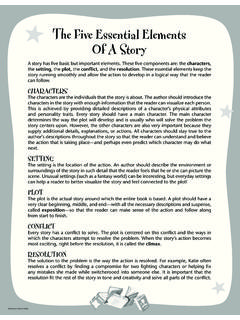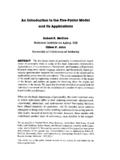Transcription of The FIVE Dysfunctions of a Team - Executive Agenda
1 The five Dysfunctions of a team by Patrick LencioniMembers of dysfunctional teams ..Dysfunctionsand ways to Overcome each oneMembers of trusting teams .. Stagnates/fails to grow Rarely defeats competitors Loses achievement-oriented employees Encourages team members to focus on their own careers andindividual goals Is easily distractedInattention to Results9 Public declaration of results9 Results-Based rewards9 Setting the tone for a focus on resultsfrom the leader Retains achievement-oriented employees Minimizes individualistic behavior Enjoys success and suffers failure acutely Benefits from individuals who subjugate their own goals/interests forthe good of the team Avoids distractions Creates resentment among team members who have different standardsof performance Encourages mediocrity Misses deadlines
2 And key deliverables Places an undue burden on the team leader as the sole source ofdisciplineAvoidance of Accountability9 Publication of goals and standards9 Simple and regular progress reviews9 team rewards9 Ability of leader to allow the team to serve asthe first and primary accountabilitymechanism Ensures that poor performers feel pressure to improve Identifies potential problems quickly by questioning one another sapproaches without hesitation Establishes respect among team members who are held to the samehigh standards Avoids excessive bureaucracy around performance management andcorrective action Creates ambiguity among the team about direction and priorities Watches windows of opportunity close due to excessive analysis andunnecessary delay Breeds lack of confidence and fear of failure Revisits discussions and decisions again and again Encourages second-guessing among team membersLack of Commitment9 Cascading Messaging9 Deadlines9 Contingency and Worst-case scenario analysis9 Low-risk exposure therapy9 Ability of leader to not place too high of apremium on consensus or certainty Creates clarity around direction and priorities Aligns the entire team around common objectives Develops an ability to learn from mistakes Takes advantage of opportunities before competitors do Moves forward without hesitation
3 Changes direction without hesitation or guilt Have boring meetings Create environments where back-channel politics and personal attacksthrive Ignore controversial topics that are critical to team success Fail to tap into all the opinions and perspectives of team members Waste time and energy with posturing and interpersonal riskmanagementFear of Conflict9 Mining for conflict9 Real-Time Permission9 Personality style and Behavioral Preferencetools9 Demonstration of restraint by leader whenpeople engage in conflict Have lively, interesting meetings Extract and exploit the ideas of all team members Solve real problems quickly Minimize politics Put critical topics on the table for discussion Conceal their weaknesses and mistakes from one another Hesitate to ask for help or provide constructive feedback Hesitate to offer help outside their own areas of responsibility Jump to conclusions about the intentions and aptitudes of otherswithout attempting to clarify them.
4 Fail to recognize and tap into one another s skills and experiences. Waste time and energy managing their behaviors for effect Hold grudges Dread meetings and find reasons o avoid spending time togetherAbsence of Trust9 Personal Histories Exercise9 team Effectiveness Exercise9 Personality and Behavioral Preference Profiles9 360-Degree Feedback9 Experiential team Exercises9 Demonstration of vulnerability first by leader Admit weaknesses and mistakes Ask for help Accept questions and input about their areas of responsibility Give one another the benefit of the doubt before arriving at a negativeconclusion. Take risks in offering feedback and assistance Appreciate and tap into one another s skills and experiences Focus time and energy on important issues, not politics Offer and accept apologies without hesitation Look forward to meetings and other opportunities to work as a grou







